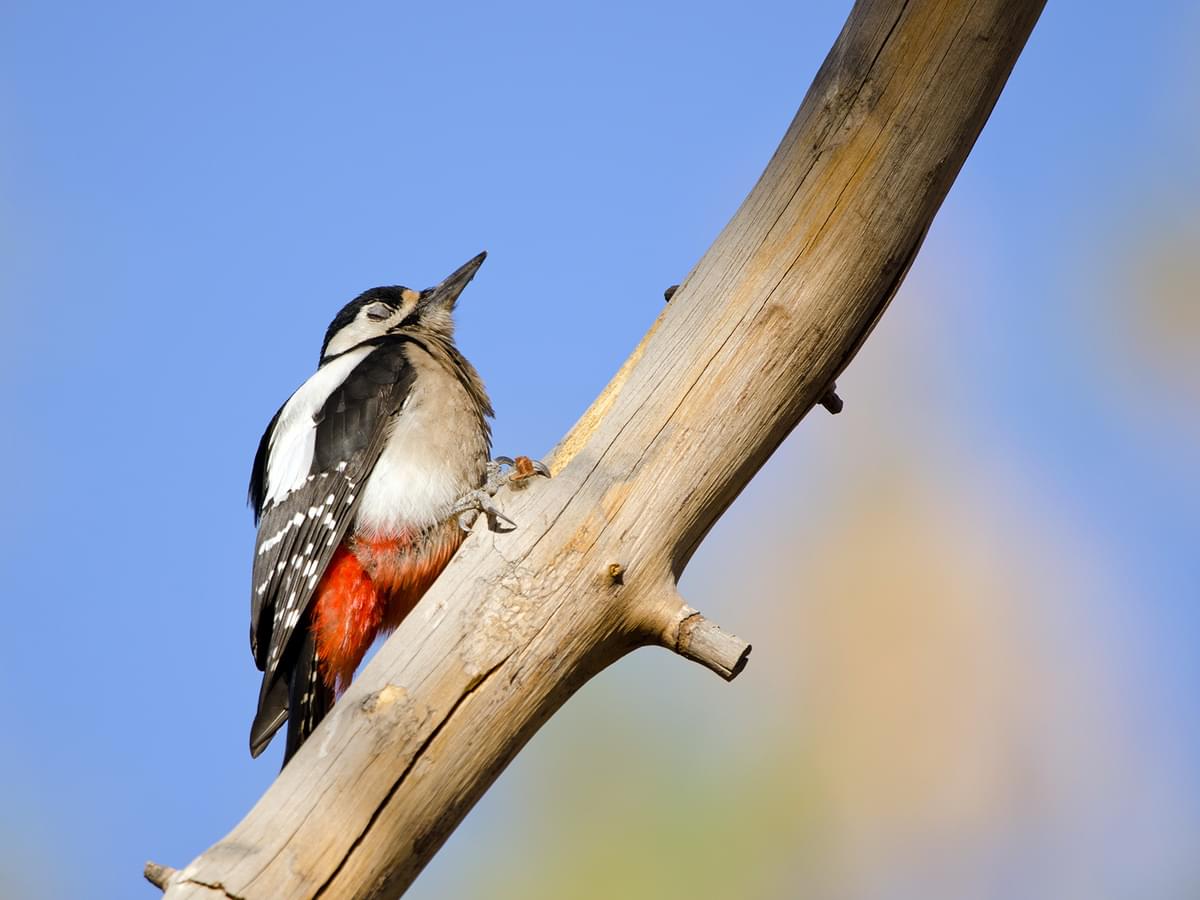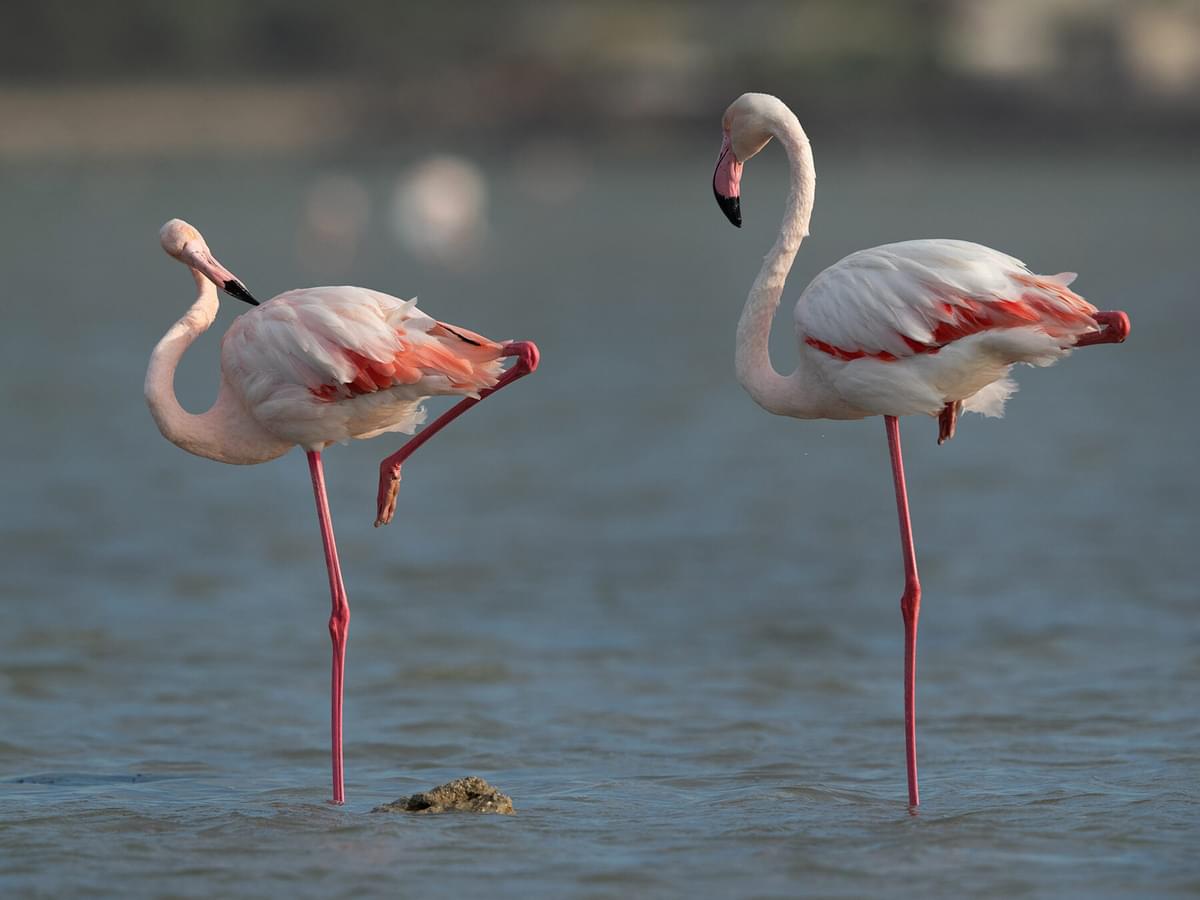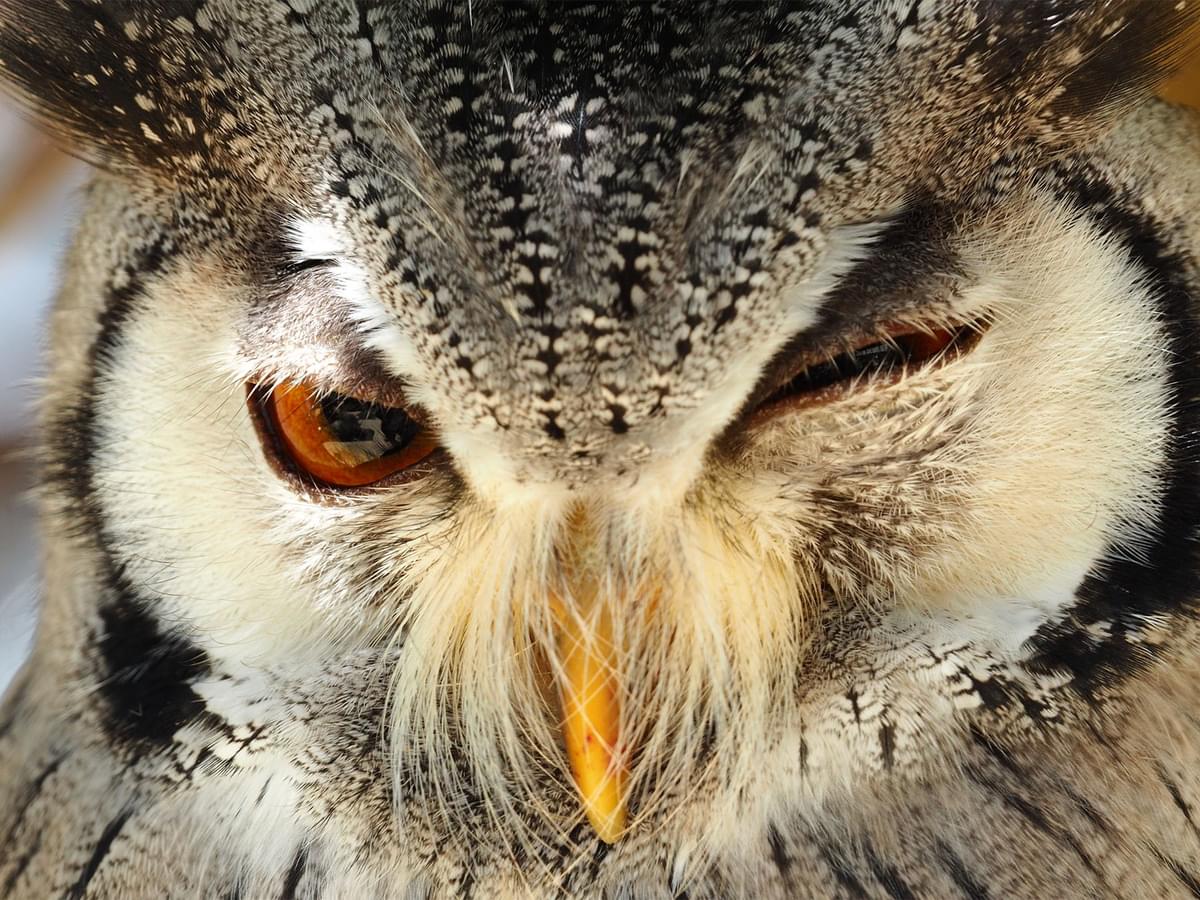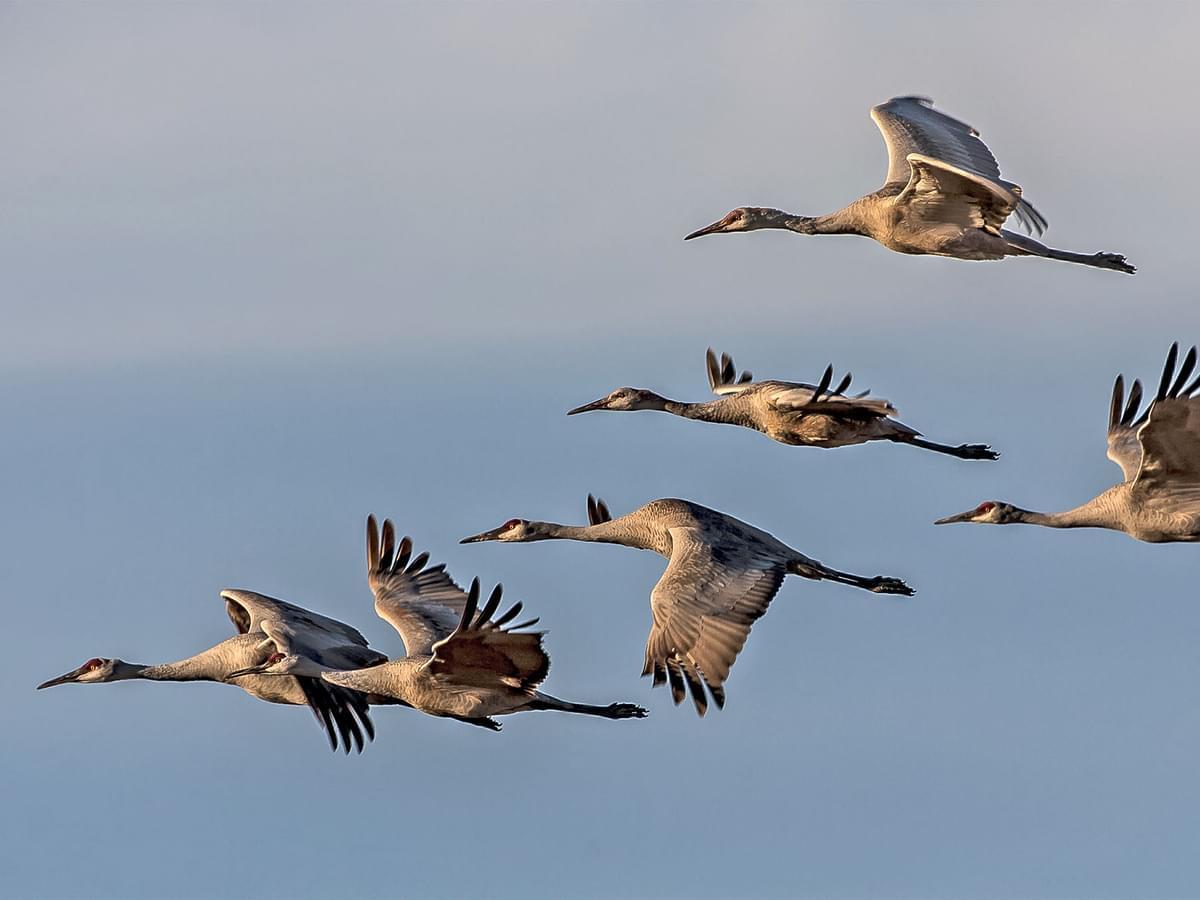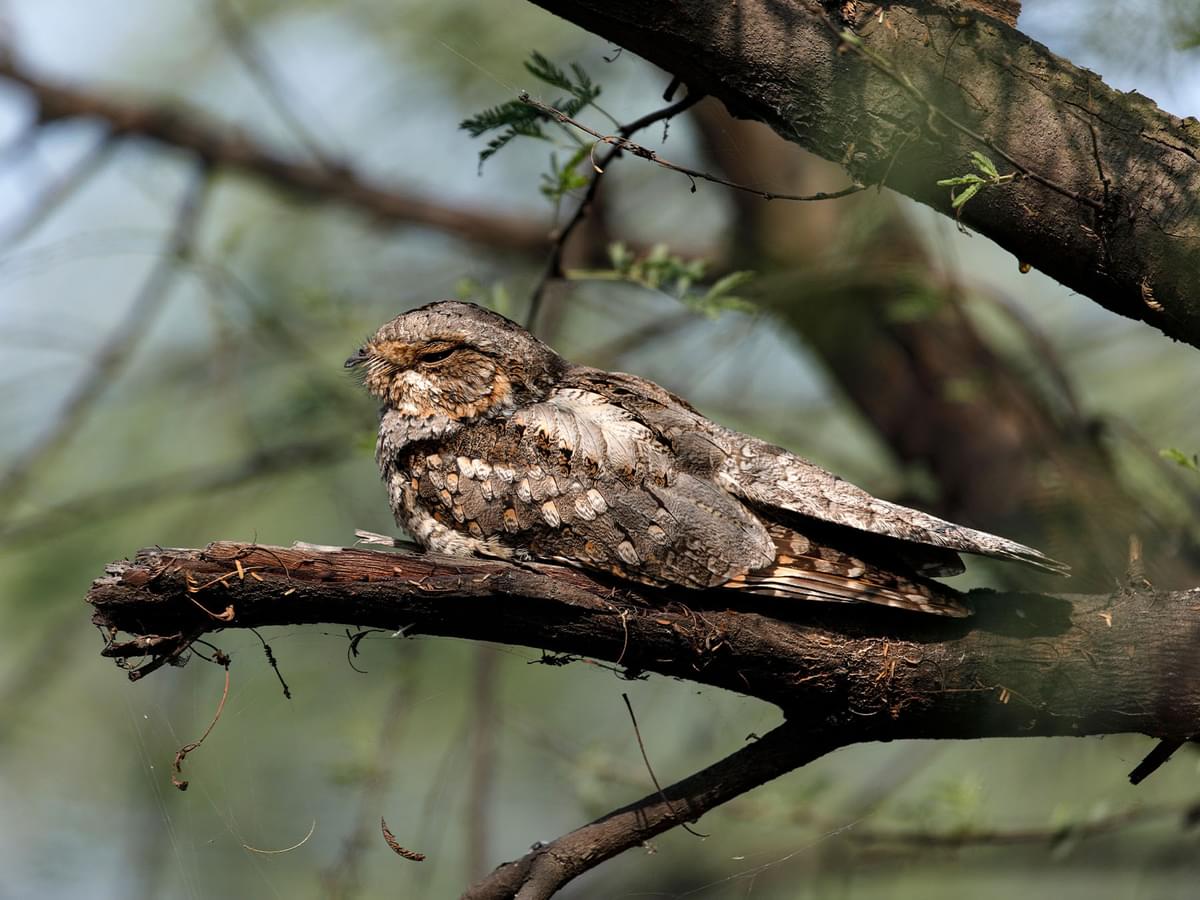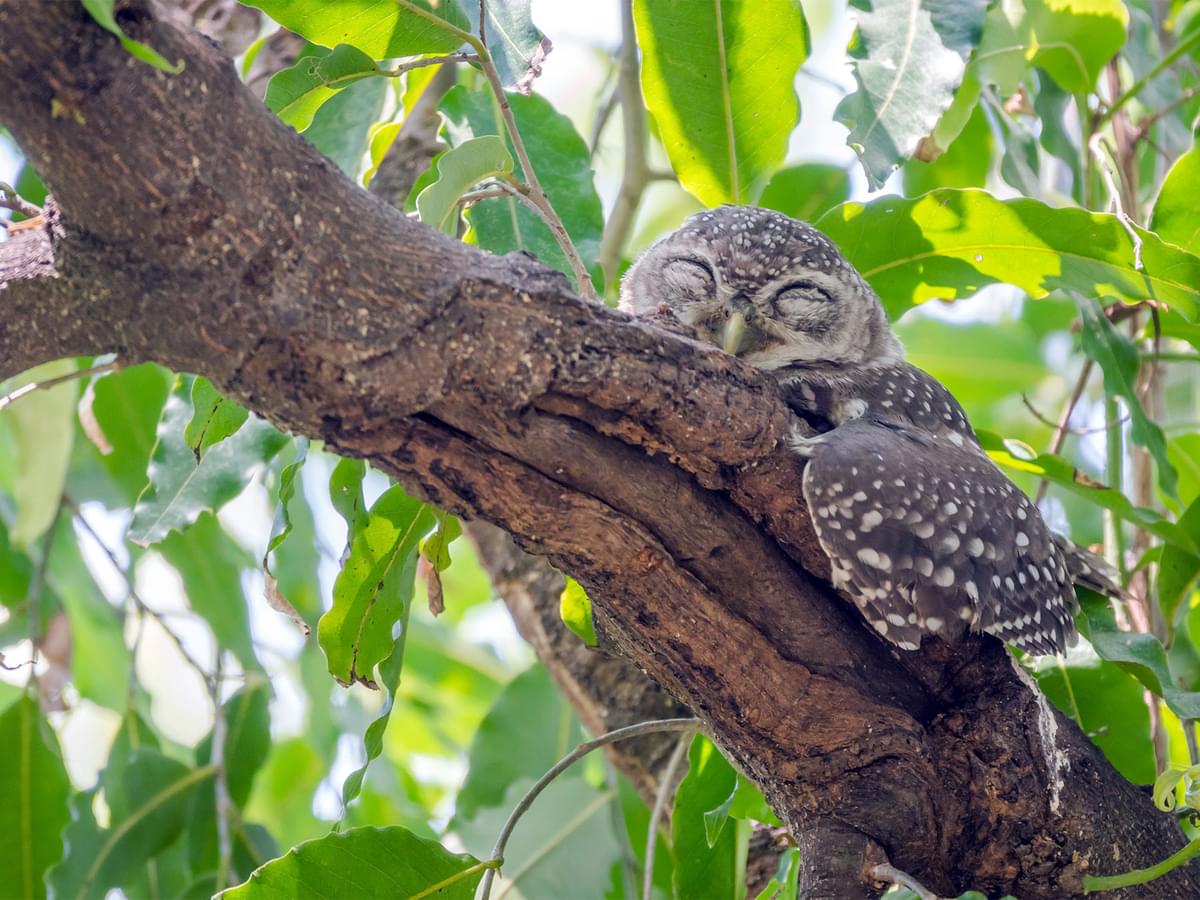Sleeping Habits and Behavior
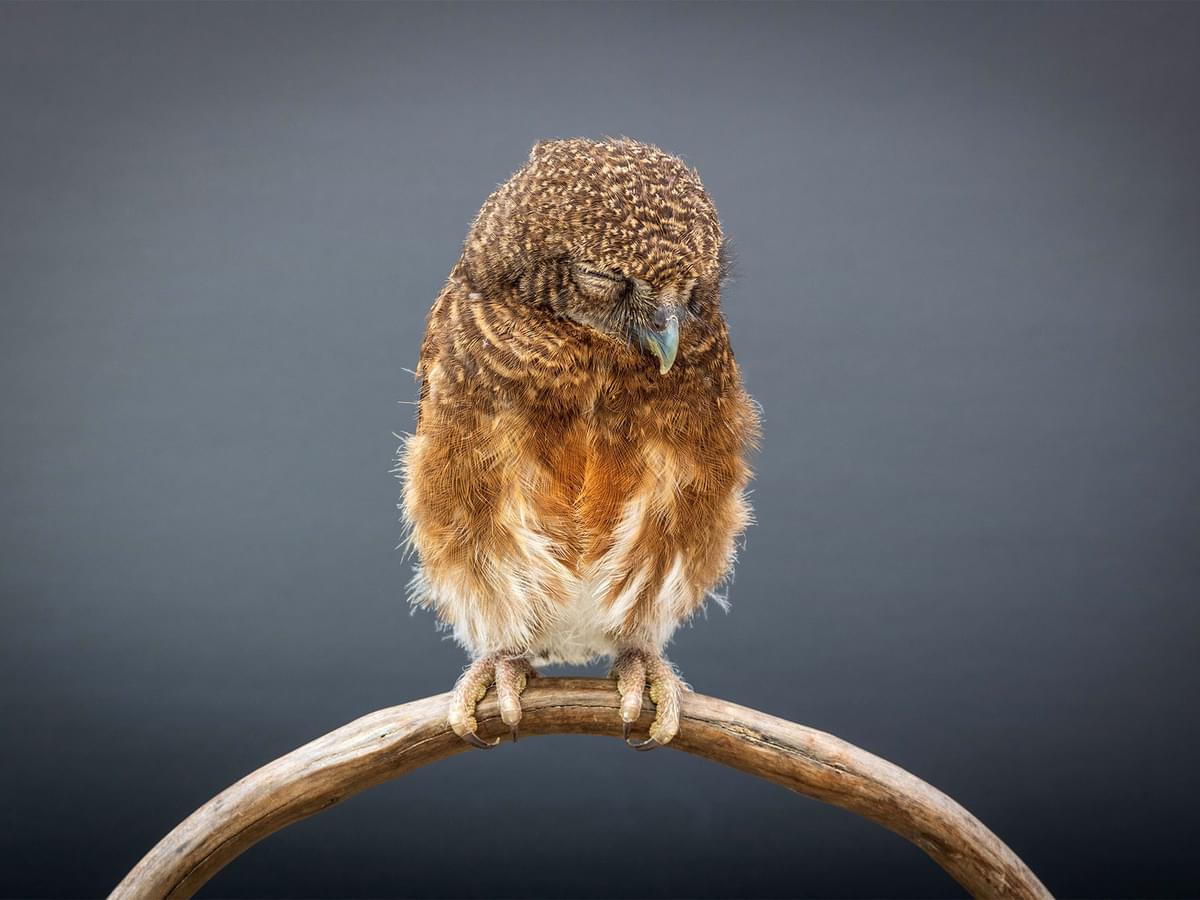
- The Basics of Bird Sleep
- Where and How Birds Sleep
- Unique Sleeping Postures
- Factors Influencing Sleep Locations and Behaviors
- Seasonal Sleep Patterns
- Sleep Across Life Stages
- Unique Sleep Adaptations
- Threats and Disturbances
- The Science of Bird Dreams
- Special Cases
- Evolution of Bird Sleep
- Tips for Birdwatchers
- Summary
- FAQs
Like ourselves, birds need to sleep to rest, recover from their activities, and remove waste built up in the brain. The way they sleep is actually pretty similar to ourselves, although these fascinating creatures also have some rather unique and remarkable sleeping habits.
Whether standing on one leg, drifting on the open ocean, or even snoozing in the air, the world’s birds have come up with various ways to get some shut-eye. If that sounds interesting to you, read along because, in this guide, we’re learning all about the secrets of bird sleep!
The Basics of Bird Sleep
All birds are known to sleep, although where, when, and how they sleep differs between species, life stages, and even times of the year. Sleeping implies reduced awareness of their surroundings, which is pretty dangerous for birds with many natural enemies. However risky, sleep is a necessary trade-off because a lack of rest impairs their ability to function.
Most birds sleep every night, day, or both for anything from six to twelve hours or more. Diurnal birds usually return to their roosts around dusk and leave at dawn, although some birds, like Woodpeckers, may enter their sleeping cavity well before sunset and ‘sleep in’ a little the next morning.
One of the most obvious visual differences between birds' and other animals’ sleep is their posture. While horses and some other animals can sleep in a standing position, mammals generally lie down to sleep. Some birds also lie down to sleep, but most stay upright, either perched or sitting on their haunches.

Pictured: A Downy Woodpecker. Woodpeckers take short naps during the day and may do this outside of a roosting cavity by simply clinging to the bark of a tree
Where and How Birds Sleep
Have you ever seen a sleeping bird? With over 50 billion birds on the planet, it’s surprising how well these creatures hide themselves away to rest. In this section, we’ll explore some of the typical places birds sleep and how they do it.
Nests
There is a common misconception that birds sleep in nests, but this is rarely the case. The primary purpose of a bird’s nest is to create a safe and comfortable place to incubate eggs and raise chicks. Generally speaking, birds only sleep in nests while sitting on eggs or brooding their young.
One interesting exception comes from the semi-deserts of Southern Africa. The Sociable Weaver is a small finch that builds the world’s largest nests, often housing hundreds of birds. These communal creatures nest and sleep in these enormous structures.
Some birds regularly sleep in the nests of other bird species. Woodpecker nest cavities provide the perfect place for small songbirds like Chickadees and Titmice to spend cold winter nights.
Perched Sleepers
Most birds sleep perched on branches and other elevated places like buildings, cliffs, and telephone lines. The inner limbs of bushes and trees provide the perfect shelter and hiding place for small to medium-sized songbirds, but snags and wires are ideal for larger birds like Crows and Hawks.
Sleeping sweetly while clinging to a narrow perch might seem like a challenge, but perch-roosting birds are perfectly equipped to stay put. Their toes and talons wrap securely around the perch, and their excellent balance keeps them from toppling over.
While birds can actively grasp their perch using muscles, they are also widely believed to use a passive perching mechanism to grip without effort. This is achieved with a special tendon that closes the toes automatically when the leg joints are bent and releases the grip when the bird extends its legs to fly off.

Pictured: A Northern Gannet. Generally speaking, birds only sleep in nests while sitting on eggs or brooding their young

Pictured: A Kookaburra. Most birds sleep perched on branches and other elevated places like buildings, cliffs, and telephone lines
Ground Sleepers
Many gamebirds will ascend to roost in trees, while others simply bed down on the ground for the night. Waders and shorebirds also sleep on the ground, partly because their feet aren’t built for grasping but also because they often live in very open environments.
Roosting on the ground brings some rather obvious risks for small birds. So, how do ground sleepers avoid being eaten by terrestrial predators like foxes and cats?
Predators typically rely on stealth to sneak up on their prey, so many ground-sleeping birds select level ground with short vegetation. Islands on lakes, rivers, and estuaries are favorites for many shorebirds and seabirds, and some long-legged species even sleep standing in shallow water to eliminate any chance of a silent approach.
Ground roosting gamebirds like Bobwhites often roost in small groups called coveys to benefit from extra eyes and ears. These groups hunker down together in a ring shape with their tails in the center and their heads facing outwards, which has the added benefit of trapping body heat. Species like the Grey Partridge also favor open fields for roosting, so predators can’t sneak up on them.

Species like the Grey Partridge (pictured) favor open fields for roosting
Floating Sleepers
Many waterbirds are clumsy on land and prefer to sleep on the water where they are safe from predators. Birds like Grebes and Loons sleep out in open, deep water where they can’t be surprised by mammalian predators. Out on the open ocean, many seabirds have no choice but to float on the water if they want to sleep deeply.
Sleeping on water might seem like a pretty miserable experience, but these birds are well insulated against the cold, and well-preened and waterproofed feathers keep them dry and comfortable.
Communal Sleepers
Many birds roost communally in groups ranging from a few individuals to immense flocks. Gregarious songbird species like the European Starling and Red-billed Quelea are even known to gather in their millions!
Communal roosting has many benefits for birds, including safety in numbers and the concentrated warmth of the colony. Of course, individuals with a spot in the middle of the roost benefit more than those on the perimeter, and there may be a hierarchy that determines who sleeps where.
Arrival and departure from the roost can be fascinating to see. Perhaps the most spectacular display of communal roosting is the Starling murmuration. On winter evenings, flocks of several million Starlings may assemble in the sky above the night’s roost, wheeling and turning in fantastic patterns.

Pictured: An American Wigeon. Many waterbirds are clumsy on land and prefer to sleep on the water where they are safe from predators
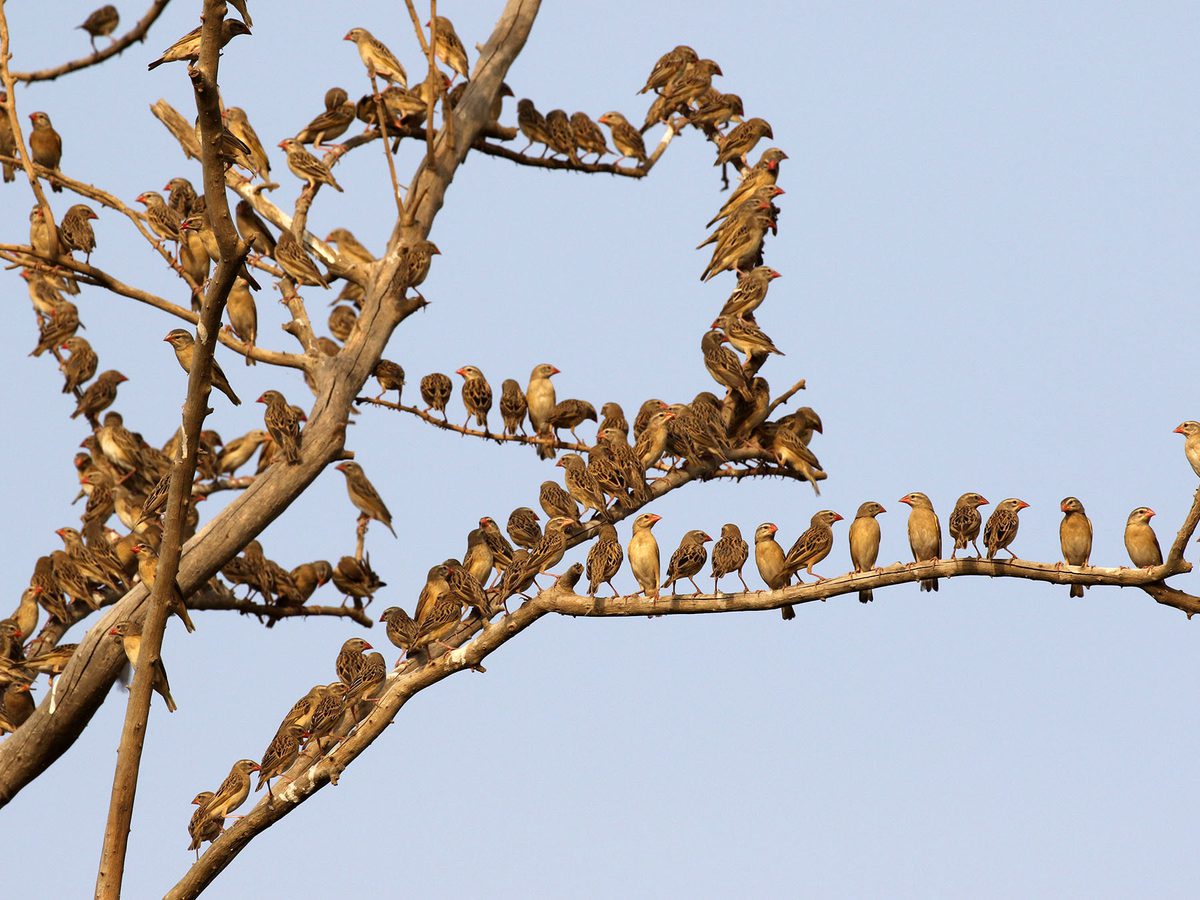
Pictured: Red-billed Quelea. Communal roosting has many benefits for birds, including safety in numbers and the concentrated warmth of the colony
Migratory Rest
Migratory birds may cover vast distances en route between their breeding and overwintering grounds. Their migrations are often made in stages, with regular stops along the way to rest, sometimes for weeks at a time. However, some birds make immense non-stop flights lasting up to eight days!
Migrating birds don’t just stop at any old place to sleep. They tend to select locations with good food resources and roosting areas where they can fuel up and rest in safety. Certain areas, like desert oases or the last dry land before a significant water crossing, are especially attractive.
Gregarious migrants may gather in spectacular numbers too. Migrating Barn Swallows, for example, tend to roost in large reedbeds, sometimes in their millions.
Nook and Cavity Dwellers
For the same reasons that some birds sleep in old Woodpecker cavities, many species use the shelter of natural and artificial nooks and cavities.
These include everything from small caves (Barn Owls) and under the eaves of buildings (Feral Pigeons) to natural holes in trees (Screech Owls) and even mammal burrows (Burrowing Owl).
Sleeping in cavities like Woodpecker holes and birdhouses has some pretty obvious benefits. They provide shelter from rain and wind and hide the birds from sight. However, cavities can also be a dangerous place to be if discovered by a similar-sized predator.

Migrating Barn Swallows (pictured) tend to roost in large reedbeds, sometimes in their millions

Pictured: An Eastern Screech Owl roosting in a tree cavity
Unique Sleeping Postures
Most birds turn their heads back and tuck their bills under their shoulder (scapular) feathers while they sleep. This posture makes them more compact, allows them to rest their necks, and significantly reduces heat loss. They also fluff out their down feathers to create an air space that traps warm air and insulates them against colder ambient temperatures.
Many birds drop down to the floor or lift one leg while sleeping. This balancing act can be very important for waterbirds like Flamingos that sleep standing in shallow water. It may seem tiring, but standing on one leg allows them to halve the heat loss from their legs.
Owls have been known to sleep in some surprising and heart-warming ways, too, and pictures of Owl chicks sleeping flat on their bellies have delighted people worldwide.
Some birds sleep in stranger postures still. Hummingbirds occasionally nap upside down, and it is thought that birds like Swifts and Terns can even sleep while flying!

Many birds like the Flamingo (pictured) lift one leg while sleeping
Factors Influencing Sleep Locations and Behaviors
Birds do not prepare their roost site, so they must select a suitable spot that already has everything they need to stay warm and safe. Typical locations are at least partially sheltered from rain, wind, and snow and safe from roaming ground predators.
Territorial birds need access to food resources, nest sites, and safe places to sleep, so available roost sites can be an important factor in choosing a territory. However, these needs can’t always be met throughout the year, and many of the world’s birds leave their breeding territories to migrate to warmer areas each fall.
Most birds are diurnal, although you may be surprised to learn that many are active at any time of the day or night. Many shorebirds forage according to tide rather than time. These birds may roost above the high tide mark and forage when the receding water exposes marine invertebrates.
Seasonal Sleep Patterns
The seasonal change in day length affects the amount of time that resident birds can forage, especially those that endure winters at high latitudes. These birds rely largely on energy-rich foods and sheltered roosts to survive, but some, like the Nuthatches, may huddle together for warmth on those long, cold nights.
While many reptiles, amphibians, and mammals hibernate or estivate during harsh seasons, birds must stay active and feed every day to survive. However, there are some exceptions.
The Common Poorwill is the most dramatic example of a bird that can enter torpor. In this state of reduced metabolic activity, they can reduce their heart rate and body temperature to limit energy loss, sometimes for several weeks. Hummingbirds enter torpor, too, but only for one night at a time.

The Common Poorwill (pictured) is the most dramatic example of a bird that can enter torpor
Sleep Across Life Stages
Chicks
Altricial chicks (songbirds, etc.) sleep in the nest until they fledge or disperse onto nearby branches, but precocial chicks (wildfowl, etc.) leave the nest on their first day and tend to sleep huddled around their parents. Grebe chicks find a cozy place to rest above the water on their parent’s backs, while chickens and other ground birds may wrap their wings around their young to keep them warm.
Bird chicks tend to sleep more than adults as they grow, and the type of sleep can differ too. For example, researchers found that Ostrich chicks entered REM sleep less often and for shorter periods than adults.
Molting and Sleep
All birds molt to replace warn feathers, transition into adult plumage, or brighten up for the breeding season. This is typically a gradual process, although Ducks and Geese replace their flight feathers all at once, leaving them flightless for several weeks. They may sleep more than usual at this time, saving energy and putting it towards growing new flight feathers.
Many pet owners also report increased sleeping when species like Parrots and Budgies are molting, even though these birds do not become flightless during the process. It could be that increased sleeping behavior is pretty widespread among molting birds.

Grebe chicks (pictured) find a cozy place to rest above the water on their parent’s backs
Unique Sleep Adaptations
Unihemispheric Slow-Wave Sleep (USWS)
Birds have the amazing ability to rest one half or hemisphere of their brain while keeping the other side awake and alert. They are not the only creatures with this ability, however, and some large sea mammals like seals and whales do the same thing.
Predator detection is one of the great benefits of sleeping with one eye open, so birds can keep a look out in the direction where their enemies are most likely to approach. Interestingly, the eye that stays open is on the same side as the resting half of the brain.
Sleeping While Flying: The truth behind the myth
Some birds use Unihemispheric Slow-wave Sleep in even more creative ways. Most species stay wide awake while flying to coordinate their movements, maintain their course, and watch out for aerial predators. However, some birds fly for surprisingly long distances and periods of time. USWS is thought to be the secret to ‘sleeping on the wing.’
Microsleeps
Birds can also ‘accumulate’ sleep by taking short naps during the day. These microsleeps may last just a few seconds but are especially important for sleep-deprived migratory birds. They also allow birds to rest during the day while minimizing the chance of being stalked by a predator.

The Alpine Swift (pictured) has the amazing ability to rest one half or hemisphere of their brain while keeping the other side awake and alert (USWS)
Threats and Disturbances
Predators
Birds are important prey for many animals (including other avians), and the threat of predation is one of the major drivers of how birds sleep. From choosing hidden spots to taking seconds-long ‘power naps’, the danger of predators like cats and hawks affects almost everything about how birds sleep.
Environmental Factors
Birds may choose to roost in severe weather when foraging is just too dangerous. However, birds can’t simply sleep the day away when it’s cold because they require even more food than usual to maintain their metabolism.
However, not all environmental factors are caused by Mother Nature. Sound and light pollution play an increasing role in bird sleep patterns, particularly in urban and suburban environments.
Some birds are staying active longer into the night by hunting and foraging near artificial light sources. Birds can sleep in noisy environments, although noise pollution could potentially mask the sound of approaching predators or other birds in the area.
The Science of Bird Dreams
Like us, birds enter phases of Rapid Eye Movement (REM) and Slow Wave Sleep (SWS) / Non-Rapid Eye Movement (NREM) during sleep. Scientists still don’t know the complete function of REM sleep across all species, but it is well-known that dreaming occurs during this phase in humans.
Whether birds dream or what they dream about remains unknown, although tantalizing research into Zebra Finches has uncovered brain activity and muscle movements associated with singing during sleep. However, the patterns don’t quite match those seen during daytime vocalizations, and the function of this activity isn’t fully understood.
Another study published in Nature Communications discovered that regions of the brain that process visuals during flight are activated during REM sleep in Pigeons, suggesting the birds may be dreaming of flying!

Research into Zebra Finches (pictured) has uncovered brain activity and muscle movements associated with singing during sleep
Special Cases
Owls
While most Owls are nocturnal, many species are active on winter days or in overcast weather. Some are even more active during the day than in the night. Even nocturnal Owls will be awake for part of the day and rest for part of the night.
Swifts and Frigatebirds
Some birds can stay in flight for several days, weeks, or even months without landing. Albatrosses are believed to spend weeks in the air, although they are also known to sleep for hours at a time while floating on the water’s surface.
The Frigatebird, a large seabird of the tropics, is famed for the ability to sleep on the wing by entering Unihemispheric Slow Wave sleep. These birds cannot swim and may spend over two months in flight over the open ocean!
Swifts are another fascinating example of birds that sleep in flight because they only land to nest. Although difficult to study in the air at night, it is thought that these speedy relatives of the Hummingbirds sleep in short bursts.
Migration and Sleep
Many normally diurnal birds migrate at night to avoid predators and strong air currents. This presents a problem for birds that need to be active during the day to feed. However, these nocturnal navigators can catch up on some of their lost sleep by napping during the day.
Migrating birds often rest at stopover sites or gather in key staging areas that provide a good place to refuel and sleep in safety.
Of course, this is only possible when there is terra firma below where they can land, and some small songbirds that cross the Gulf of Mexico must fly non-stop for 24 hours without rest!
Tired migrants crossing the ocean will use some pretty unusual rest stops when they have to, including ships and oil rigs.

The Frigatebird is famed for the ability to sleep on the wing by entering Unihemispheric Slow Wave sleep
Evolution of Bird Sleep
Despite the similarities between mammalian and avian sleep, REM and NREM sleep are thought to have evolved independently in each class.
Researchers from the Max Planck Institute for Ornithology suggest that some common sleep functions may have evolved in these groups as a result of their advanced brain power.
Intelligence, specialized bodies, and complex behaviors are all pieces of a puzzle that explain the success of birds. The amazing avian adaptations we see today, like Unihemispheric Slow-Wave Sleep, communal roosting, and the ability to sleep almost anywhere, have undoubtedly helped birds evolve into the impressive diversity of species we know today.
Tips for Birdwatchers
Identifying Sleeping Birds
Birds frequently nap during the day, and it’s not unusual to see a songbird resting on a branch or a waterbird snoozing away in full sunshine. Sleeping birds typically turn their heads back, but they may also simply close their eyes and fluff out their feathers. Waterbirds and Gulls may stand on one leg or drop down onto their belly.
Observing Sleeping Birds
Most birds are very quiet and cautious when approaching their roosts at night, but you may be able to get a glimpse of this behavior by watching likely spots at dusk. Some of the most fascinating wildlife observations happen when you simply sit quietly and watch the birds around you.
Spotting a sleeping bird at night is always interesting as it offers us a glimpse into the secret lives of birds that we don’t usually see on a day-to-day basis. However, it’s best to let sleeping birds lie without disturbance. While some birds will sleep tight and allow a close approach at night, many will go flying off clumsily into the dark, often striking branches, wires, and other objects that can cause them injury.

Pictured: A Turtle Dove. Sleeping birds typically turn their heads back, but they may also simply close their eyes and fluff out their feathers
Summary
From a cozy backyard birdhouse to the clouds above, birds have found a way to catch some Z’s in many remarkable places and ways.
The importance of sleep is often overlooked when we think about bird behavior. However, our feathered friends could not have survived for millions of years and adapted to almost every major habitat on Earth without some good rest and the ability to sleep in challenging conditions and environments.
Understanding bird behavior isn’t just fascinating for birdwatchers. It’s also vital for conserving and safeguarding the world’s avian treasures because roost sites can be just as important as feeding and nesting areas.
Why not spare a thought for the birds in your neighborhood this evening and keep an eye open for roosting behaviors in the birds around you? The secret lives of birds are truly fascinating, and there’s always something new to learn!

Pictured: A Blue Waxbill taking a nap. The importance of sleep is often overlooked when we think about bird behavior
FAQs
Do birds dream?
It’s still unclear as to whether birds dream or what they dream about, partly because they cannot communicate their experiences. However, scientists have discovered that birds enter REM sleep and that parts of the brain associated with song, visual processing, and possibly even emotion are activated during sleep.
Why don't perching birds fall off branches when they sleep?
Birds use a combination of their grasping toes, sharp talons, and a special locking tendon to grip their perch without effort during sleep. However, birds also have excellent balance and grip strength, so they can stay perched even without locking tendons.
How do birds sleep during storms?
Birds seek sheltered roosts during storms where they are not affected by wind and rain. They may shelter in cavities, dense vegetation, or on a branch on the wind-free side of a tree trunk to stay warm and dry.
Do pet birds have different sleep habits?
Pet birds cannot select their own roost, so it’s essential to keep them in an appropriate enclosure that provides a comfortable sleeping environment.
Almost all the commonly kept domesticated birds are diurnal, which means they sleep during the night. It’s best to keep pet birds in a quiet area of your home where you can provide a natural photoperiod or day/night cycle.
Many bird owners will cover their bird’s cage in dark material or blanket to create a suitable artificial schedule to suit their needs.
Do birds sleep in the same place every night?
Birds return to the same general vicinity to sleep every night and some may have their own private abode, but they generally find a comfortable and protected area to sleep at the end of the day. It may or may not be the same spot as used the night before.
Which birds sleep on one leg?
There are many different species of birds that sleep on one leg. This includes flamingos, seagulls and many different types of wading birds.
Explore further
Bird BehaviorOn this page
- The Basics of Bird Sleep
- Where and How Birds Sleep
- Unique Sleeping Postures
- Factors Influencing Sleep Locations and Behaviors
- Seasonal Sleep Patterns
- Sleep Across Life Stages
- Unique Sleep Adaptations
- Threats and Disturbances
- The Science of Bird Dreams
- Special Cases
- Evolution of Bird Sleep
- Tips for Birdwatchers
- Summary
- FAQs
